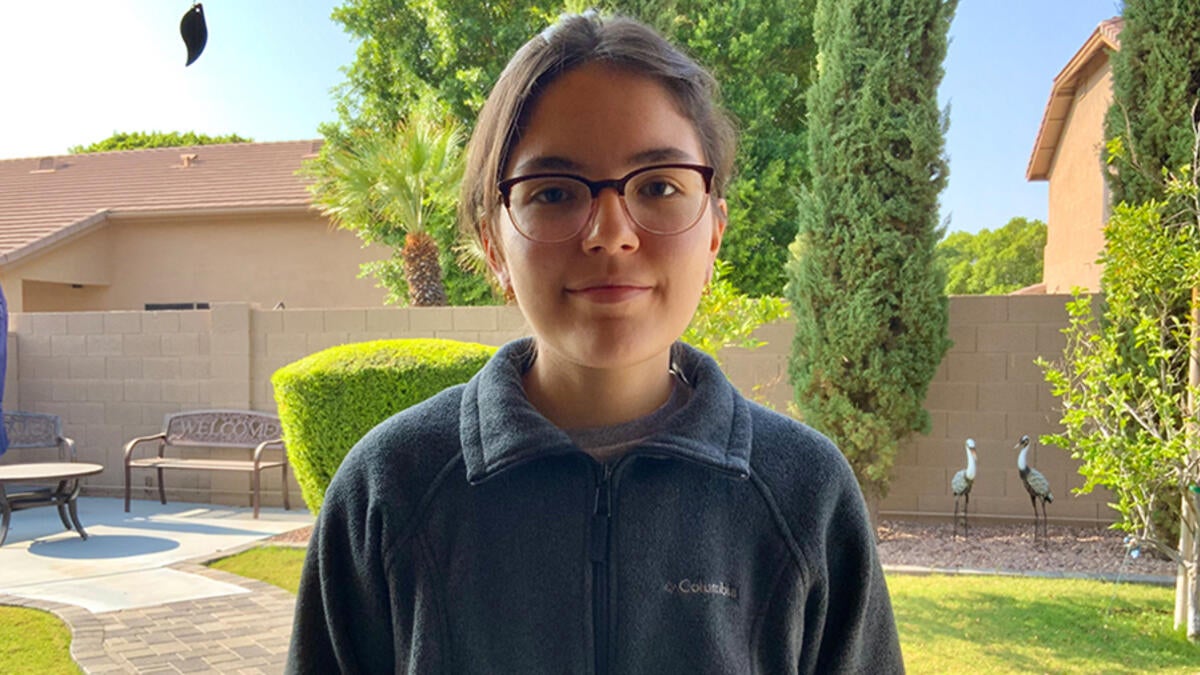American Chemical Society scholar joins ASU School of Molecular Sciences

Gabriella Cerna
Gabriella Cerna is a first-year and first-generation student in the School of Molecular Sciences and Barrett, The Honors College, majoring in biochemistry. Upon joining Arizona State University, she was awarded a scholarship from the prestigious and competitive American Chemical Society Scholars Program.
The American Chemical Society Scholars Program focuses on providing underrepresented minority students the opportunity to earn their undergraduate degree in a chemistry-related field. Cerna is from Arizona and attended Deer Valley High School, where she completed many AP and dual-enrollment classes to prepare her for college. In her free time, she loves to read, especially about new scientific topics.
The American Chemical Society scholarship made Cerna's journey to ASU possible. In her last year of high school, she applied for many scholarships. It was difficult for her and her parents to save up money for college when they barely had enough to pay for their essentials. Cerna was relying on earning scholarships to aid her in paying for school. She believed that her chances of ever winning a national scholarship like that of the American Chemical Society were very slim. To her surprise, she exceeded the requirements of the application and was selected to be a recipient of the full-ride ACS scholarship.
“This helped my family and I take some burden off of our shoulders and now I can focus on school without worrying about the cost to attend,” Gabriella said.
In her first semester, she has been learning a lot more and connecting with the content on a deeper level than in high school. Throughout the next four years of college, Cerna would love to explore research and learn more about chemistry in every aspect. She is excited to perform research in her first-ever lab and meet more passionate scientists like herself. Her goal is to apply science and show others how the world works by solving complex problems and doing research.
“My advice to students is to not underestimate their potential, you are capable of anything and qualified enough, just apply for the scholarship!” she said.
Question: How did you find out about the American Chemical Society scholarship?
Answer: My counselor sent out an email with the information on where and how to apply. The scholarship helps students who are part of a minority, like me. I heard back a couple of months after applying but the application process itself is competitive. Do not give up, always keep your head held high and keep a positive mindset when applying for scholarships.
Q: What is your dream job after graduation?
A: I would love to be someone involved in research for either a company or a university. I plan to go to grad school and get a PhD in an area that I am most passionate about.
Q: What is your biggest motivator?
A: My biggest motivator is the teachers who inspired me in high school to do and dedicate myself to anything that I set my heart to, which in this case is chemistry. Their support and push helped me apply to college and earn a great scholarship.
Q: Why did you choose your major?
A: I love science. Being able to apply myself to the material and learn how the world works outside of the classroom is outstanding.
Q: Why did you choose the School of Molecular Sciences and ASU?
A: I chose ASU and the School of Molecular Sciences because I was interested in the honors program here and when I took the tour at (the school), I felt like I fit in perfectly. A program with excellent innovation and research was a must for me and I found it all here.
Written by Mariela Lozano mlozan20@asu.edu, School of Molecular Sciences communctions assistant. Jenny Green contributed to the story.
More Science and technology

Indigenous geneticists build unprecedented research community at ASU
When Krystal Tsosie (Diné) was an undergraduate at Arizona State University, there were no Indigenous faculty she could look to…

Pioneering professor of cultural evolution pens essays for leading academic journals
When Robert Boyd wrote his 1985 book “Culture and the Evolutionary Process,” cultural evolution was not considered a true…

Lucy's lasting legacy: Donald Johanson reflects on the discovery of a lifetime
Fifty years ago, in the dusty hills of Hadar, Ethiopia, a young paleoanthropologist, Donald Johanson, discovered what would…